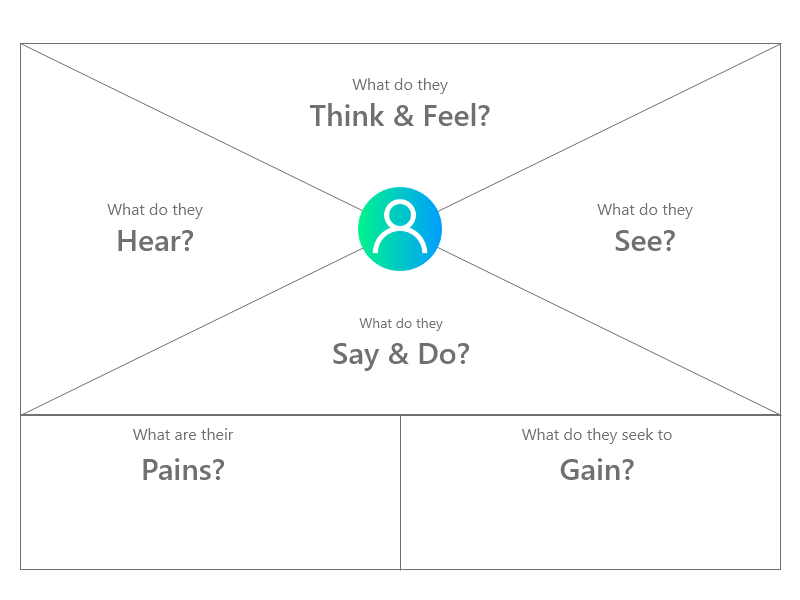With growing research in empathy, it is now established that it can solve big problems. And companies certainly do not want to miss its benefits.
Terms like customer-centric and user experience are common in today’s business world. In fact, Jeff Bezos describes being “obsessed with the customer” as a core value of Amazon. From the design of apps to car interiors, empathy is in action all around us. The competition is so stiff that companies cannot afford to be non-intuitive to their users. But how do companies understand what their users would love?
Mapping Empathy
An empathy map is a tool used to gain insights about a person or a group of people. For companies, it often helps in understanding different customer segments, and refining products for them like teenagers vs adults, etc. Here is an empathy map template with the user (or category of users) at the center.
If an empathy map can decide whether a product will be loved by billions or get wiped out of the market, there must be something you can learn from it too, right? The empathy map is completely applicable at an individual level as well. And you can see it in action by trying to fill more information, mentally or on paper, about the people close to you and see how your future interactions improve as you get more insights about them.
Like everything you ever learn, the value of an empathy map lies in its application. If you never use it, it is of no value. In fact, you can start with it as a test to see how much you know about your friends.
If you want to learn more, here is a good video to start with:
While making empathy maps, the line between gathering insights and stalking someone is very thin. Be careful! 👻

